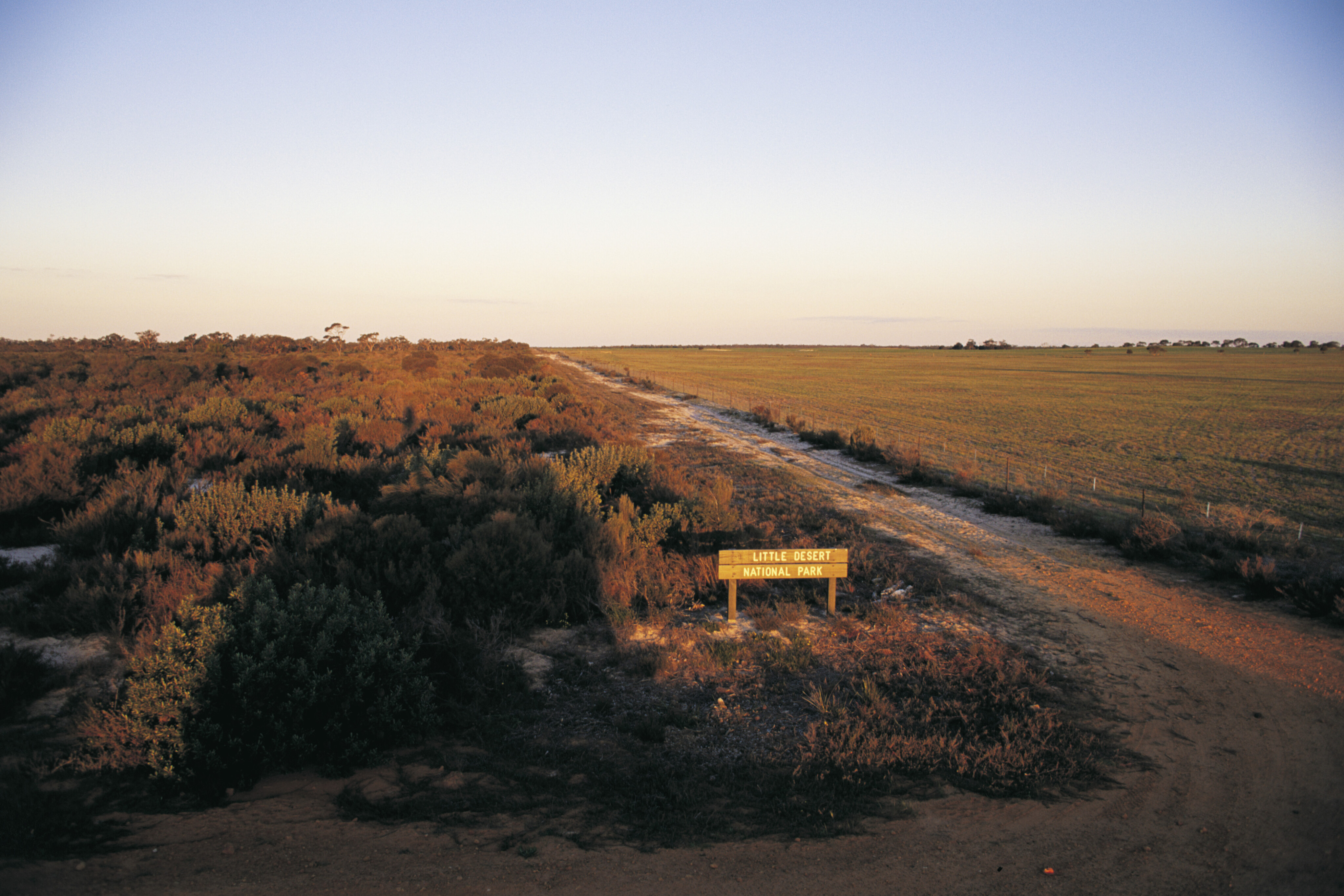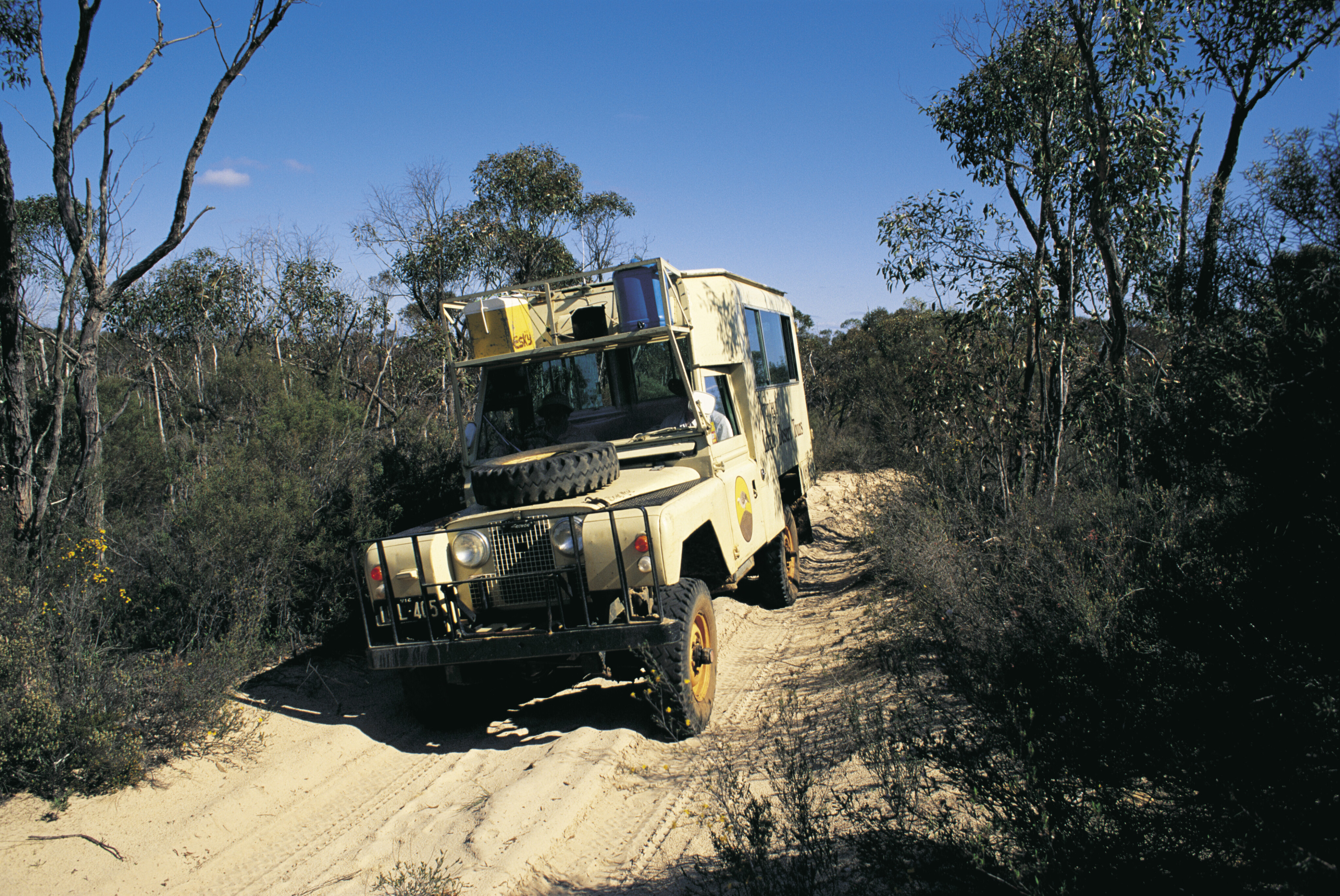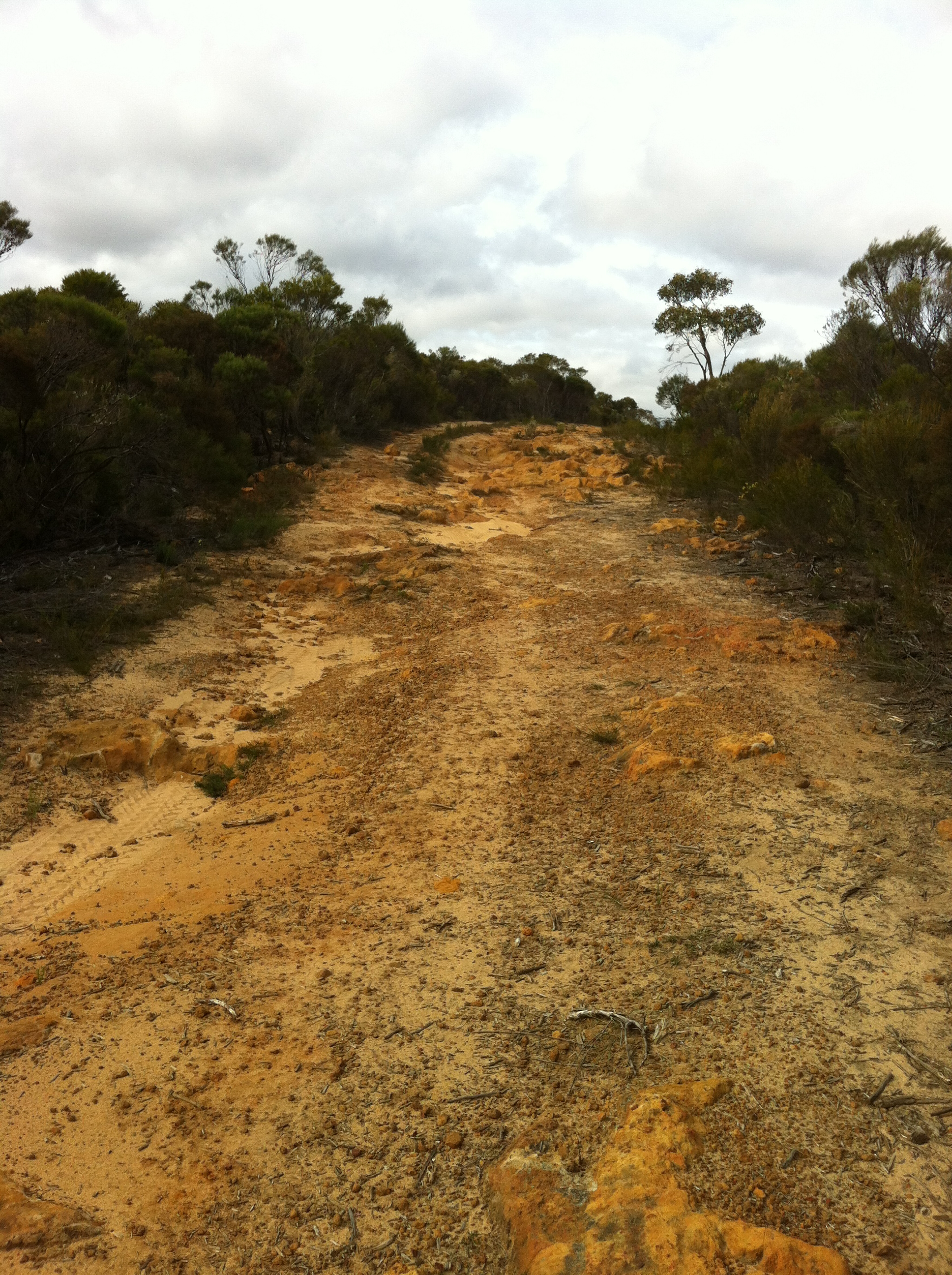
Little Desert NP is Victoria’s own ‘outback’; located around four hours’ drive west of Melbourne, not far from the township of Dimboola.
The 1326km² park is bordered by the Wimmera River (great for fishing) and the SA/Vic border on the western side, near Naracoorte, and has a fantastic mix of sandy desert terrain and huge river red gums beside the Wimmera.
The landscape offers an incredible mix of vegetation, too – mallee country vegetation, such as heath, is dominant in the eastern section due it receiving less rainfall than the western section. The west plays host to casuarina woodlands and some sections of swamp (after rain), with the ubiquitous river red gums bordering some of the park’s waterways.
The park includes several campgrounds, ranging from the easily accessed (via bitumen roads) to the more remote desert sites. There are numerous sandy 4x4 tracks to drive as you explore the park, plus two sealed ‘main’ roads that you can hop on and off as you link these tracks. The tracks here are sandy and very soft – a dual-range rig is essential – but they offer the chance to escape the crowds and really immerse yourself in this park.
For us, a great adventure is to tackle an east-west traverse of the park’s three ‘sections’ via the McDonald Highway, which starts at the eastern end of the ‘centre’ section of Little Desert NP, via Nhill Road to the east. Don’t let the moniker fool you, as this ‘highway’ is actually a sandy track.
However, if you link it with the Eastern section tracks and then, once you’re through the centre, drop south along Kaniya-Edenhope Road (just outside the centre section’s park boundary) to re-enter the park via the East-West Track, then you’ve got at least a rough plan for a weekend.

If you start in the east you can spend the first day exploring the eastern section of the park and its numerous tracks, before camping that first night at Kiata Campground, or Ackle Bend and Horseshoe Bend campgrounds (these three campgrounds are also ideal for caravan/camper trailers).
The park’s six campgrounds (including a couple of walk-in ones such as Mallee Walkers Camp and Yellow Gum Walkers Camp) offer excellent camping; plus, you can also bush camp in the central and western sections of the park, allowing you to find that perfect desert solitude along one of the side-tracks. Camp fees apply at Ackle Bend and Horseshoe Bend, so you need to book ahead.
It’s also worth noting that you will need to bring your own water, as potable water (or any water) is a scarcity in the park and not always guaranteed. It’s also worth packing a powerful torch for some night-time wildlife viewing at the campgrounds; possums and nocturnal birds are aplenty in this national park and spotting them makes for a memorable experience for young’uns (okay, okay – all of us, really) in your company.

With roughly 600km of tracks in the park, there are some crackers including Dahlenburgs Mill, Jungkum, Salt Lake, Mallee and McCabes Hut (in the eastern section), as well as Broughtons-Sambells (this takes you to Broughtons Waterhole campground), Lawloit (for views of and from Sister Hills), Jacobs and Mt Moffat, this one found in the far western section of the park and leading to its namesake peak (worth a visit).
The tracks in the park’s western section are generally rated as more difficult, but experienced drivers should have little trouble negotiating them. Just keep an eye on the weather forecast when planning your trip out here as the tracks can become seriously boggy after precipitation. Be aware that the tracks in the western and central sections are subject to seasonal closure (June 1 to October 31) and weather conditions.
As well as plenty of off-roading, Little Desert NP is a great destination for bushwalkers; numerous short walks averaging a couple of hours include the Pomponderoo Hill Nature Walk in the park’s north near Dimboola, a pretty stroll beside the Wimmera River between Ackle Bend and Horseshoe campgrounds, and the 74km Little Desert Walk, which can be broken into shorter sections if you wish.

This walk also brings you in closer contact with the park’s 220 bird species (including emus, wedge-tailed eagles and the rare malleefowl), plus you’ll spot plenty of kangaroos, reptiles (look out for snakes) and, if you’re there in spring, a landscape dotted with wildflowers. If you decide to make your Little Desert Walk an overnighter (or longer) you’ll gain access to walk-in-only campgrounds and true remoteness – just don’t forget to register online with Parks Victoria.

COMMENTS